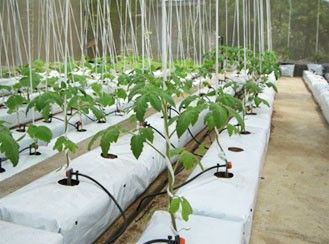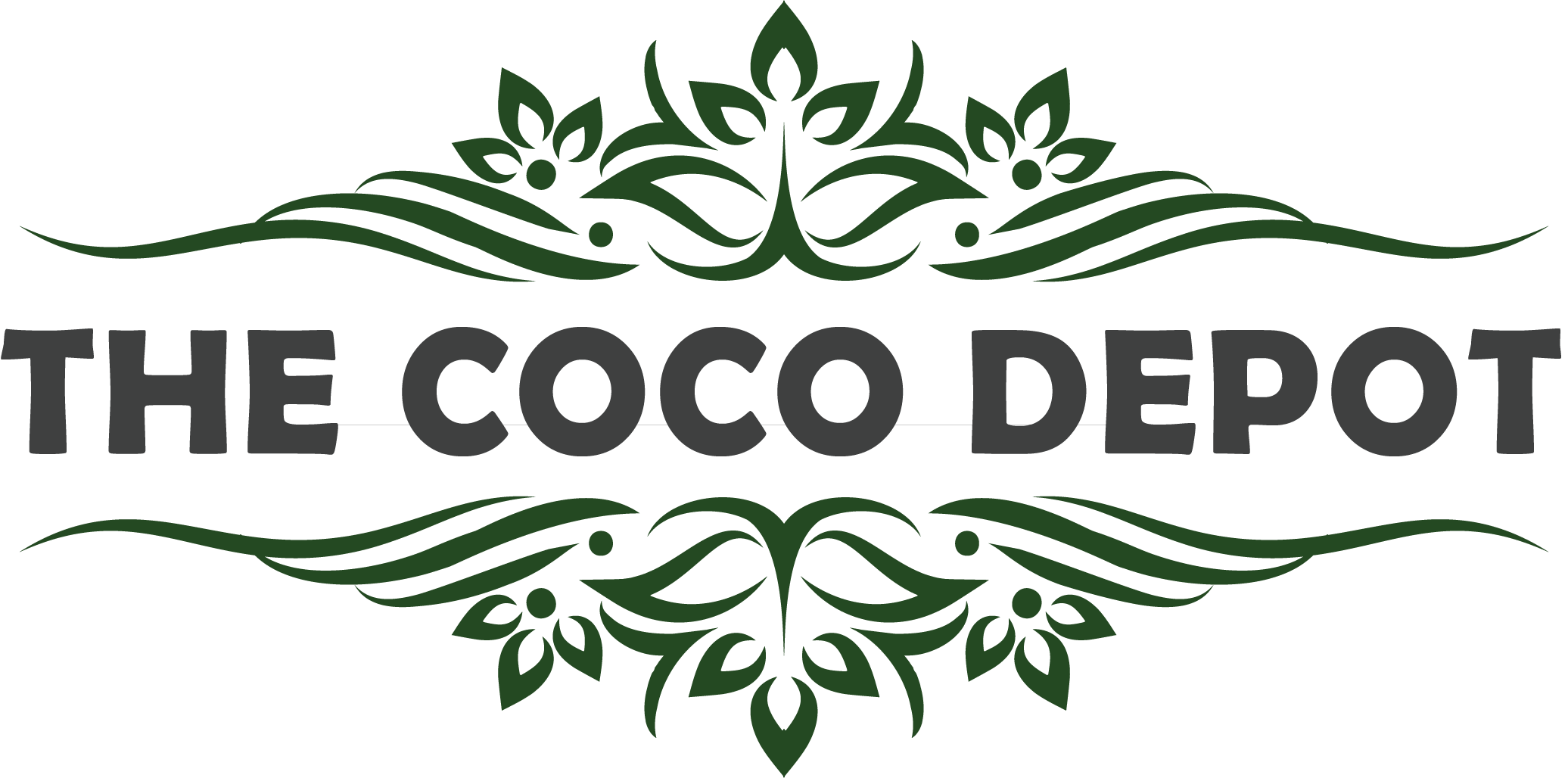Home gardening has been increasingly popular in recent years due to people's
increased interest in eco-friendly living and the natural world. Successful
garden depends on selecting the proper growing medium, as all gardeners are
aware. One remarkable growing media that sticks out as a real game-changer,
regardless of how long you've been gardening or how new you are, is coco
coir. In recent years, this organic and adaptable substrate has become
increasingly popular, winning over both novice and expert gardeners. Join us as
we explore the A-to-Z of coco coir.
The meaning and history of coco coir
The fibrous husk (mesocarp) of coconuts (Cocos nucifera) is used to make coco
coir, sometimes referred to as coconut coir or coconut fiber, a natural and
adaptable growing medium. For ages, people have utilized this renewable
resource all across the world, especially in areas like Southeast Asia, India, and
Sri Lanka where coconuts are plentiful. Because of its remarkable qualities and
environmentally friendly nature, coco coir has become more and more well-known throughout the world in recent years.
The Method: To turn the tough coconut husks into a fibrous substance
appropriate for gardening and farming, a number of procedures are involved in
the manufacturing of coco coir:
Harvesting: The outer husk of mature coconuts is removed from the fruit for
additional processing after they are gathered from coconut trees.
Retting: After a few months in water, the husks go through a natural
breakdown process called retting. The fibers' cellulose and lignin are broken
down during this procedure, which facilitates their extraction.
Extraction: Following retting, the fibers are either mechanically or manually
removed from the husks. After that, the fibers are cleansed and sifted to get
rid of any undesired particles or contaminants.
Drying: To achieve the required moisture content, the cleaned fibers are either
mechanically dried or left in the sun.
Grading and Sieving: The dried coco coir is graded and sieved according to the
fibers' size and texture. Different grades of coco coir are made for a range of
uses, including soil, hydroponics, and seed beginning.
Characteristics of Coco Coir:
Structure and Texture:
The texture of coco coir is spongy and fibrous, like tiny pieces of coconut husk.
The growth medium's exceptional structural integrity is a result of the fibers'
length. Better root anchoring and growth are made possible by this special
texture, which results in stronger and healthier plants.
Capabilities for Water Retention:
The remarkable ability of coco coir to retain water is one of its many
noteworthy benefits. Because of its fibrous nature, it can effectively retain
water while still letting extra water escape. This characteristic guarantees a
steady supply of moisture for plant roots and avoids waterlogging, which can
cause root rot.
Drainage and Aeration:
Because it is porous, coco coir offers superior aeration to plant roots. In order
to promote aerobic conditions, which are essential for root health and nutrient
uptake, oxygen can enter the root zone through the air pockets between the
fibers. Furthermore, the structure of coco coir permits surplus water to escape
freely, avoiding oversaturation of the medium.
Various Coco Coir Product Types:
Blocks & Bricks of Coco Coir:
Blocks of dehydrated and compressed coco coir fibers are called bricks or coco
coir blocks. They come in different sizes, and when rehydrated, they can swell
considerably. Blocks of coco coir are used by soaking them in water until they
reach their maximum size. Commercial agriculture and extensive landscaping
are frequent uses for these blocks.
Grow bags and pots made of coco coir:
Grow bags and coco coir pots are popular options for small-scale horticulture
and amateur gardeners. The pots are molded into different sizes using a
mixture of organic materials, including coco coir. Since they can be put straight
into the ground without uprooting the roots, they offer a great setting for seed
beginning and transplanting. produce bags are long bags made of a blend of
coco coir and other materials that are used to produce fruits, vegetables, and
larger plants in confined areas like balconies or little gardens.
Coco Coir Mats and Pellets:
Small, compressed discs called coco coir pellets are frequently used for seed
beginning. When water is added, the pellets expand, providing a convenient
and space-saving medium for germinating seeds. Coco coir mats, on the other
hand, are woven or compressed sheets of coco coir fibers. They are often used
in erosion control, landscaping, and as weed barriers in gardening and
agricultural applications.
COCO GROW BAGS
Coco Grow Bags are 100% organic and Eco friendly – Made from all-natural
coconut husk. Grow bags are made up of a special blend of coir pith and chips,
designed to provide the ideal air to water ratio for hydroponics. Coco Coir
Grow Bag is used as a component to food production for crops including
strawberries, tomatoes, cucumbers and more. This coco coir-based grow
bags foster extreme root growth and are used in high, medium and low tech
hydroponic cultivation and commercial greenhouses worldwide, Fiber dust and
grow bags come with a compressed coir slab.
We blend coir pith with a sufficient amount of short coir fiber to create our coir
pith grow bags. After that, it is compressed and loosely packed in a black and
white polythene bag that has been UV stabilized. At the user end, suitable
holes are to be cut for planting as well for drainage. Coir pith grows bags are
great for growing delicious crop such as Coco's grow bags are excellent
choice in horticulture for crops including strawberries, tomatoes, cucumbers,
pepper and much more. Coco grow bags are a perfect media for cut flower
production. Our grow bags come with a compressed coir slab that fills the bag
when hydrated. Growing medium is a delicate blend of coco peat and coco
chips. Plant hole, drain and dripper holes cut as per client request. Standard as
well as customized sizes also available as per client requirement.
Coco If you lack the area for an in-ground garden, grow bags are the ideal
solution. They can be placed around windows or porches, or they can even be
hung from walls in any location that gets sunlight. They are also beneficial as a
treatment and an alternative if your soil is of low quality. Place your grow bags
in a location where you intend to have a garden once your fall crop is over. This
will significantly increase the quality of the soil after a few years. Using paper
shopping bags rather than store-bought cloth ones or other grow bag kinds is a
fairly simple way to accomplish this. The bags will biodegrade during the
summer, leaving behind healthy, high-quality soil for your future garden.
The greatest and most environmentally friendly choice for soilless vegetable
and flower cultivation under glasshouse and tabletop poly tunnel production
are our coco peat Grow Bag Slabs. We provide our customers with Coir Pith
Grow Bags, which are made by combining coir pith with the right amount of
short coir fiber. Grow bags come in co-extruded, high-density plastic bags that
have been UV treated for at least two years. Because they are compacted dry,
they may be stored for months and are also convenient to carry before
rehydrating. A delicate mixture of coco peat and coco chips is used as growing
medium. Outstanding capacity to store air and a well-designed drainage
system. Grow bags made of low-density polyethylene (LDPE) stabilized by UV
light.
Simple to use and set up. After placing this coir grow bags, fill them with
water to allow the coco coir medium to spread and start growing. The
coco depot Coco peat grow bags are well-liked for growing cannabis, berries,
tomatoes, and cucumbers. Grow bags feature a coco coir block and are fully
assembled. Predrilled drainage holes are used. There are two sizes of bags:
three and five gallons. Large projects like greenhouses, farms, horticulture, and
landscaping, as well as smaller ones like terraced gardens and kitchen gardens,
are the main uses for Coco Grow bags. Coco Grow bags can be used in the
mushroom industry or to put up soil conditioner on a golf course.
Grow bags made of coco coir are used as a full growth system and are simple
to handle in the greenhouse. Grow Slab of Coco Coir Grow Slabs are slabs of
compressed coco coir that can be placed on the ground, in special containers,
or tranced in soil. When growers have their own troughs, Grow Slabs are the
simplest option

